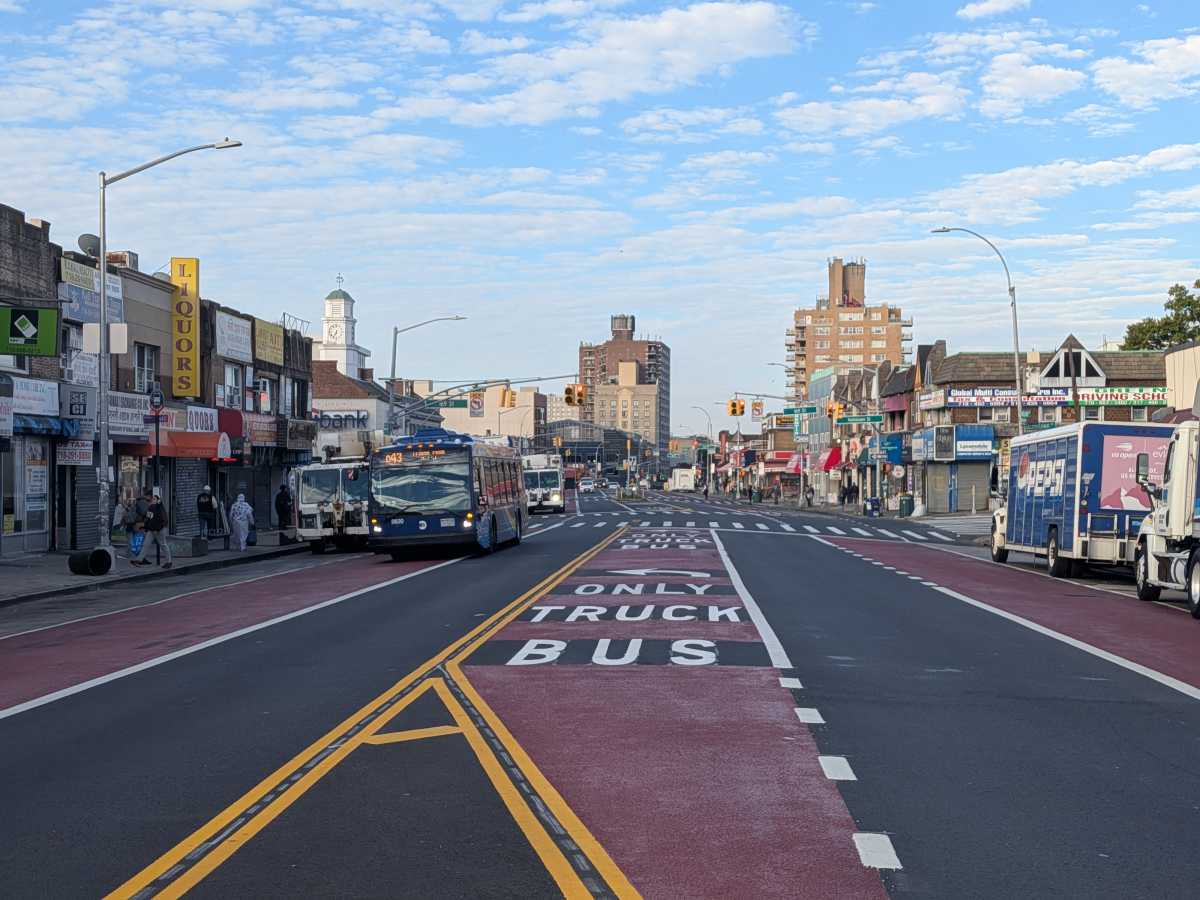The NYC Department of Transportation (DOT) has completed the construction of nearly eight miles of new bus lanes on Hillside Avenue, a significant upgrade designed to enhance transit efficiency in Queens. This initiative impacts the stretch from 139th Street to Springfield Boulevard, traversing several communities, including Jamaica and Queens Village. The redesign aims to improve the experience for the over 215,000 riders who utilize the 22 MTA bus routes operating along this corridor.
The project, which reduces the number of driving lanes by one in each direction, also introduces more than 600 additional parking and loading spaces for local businesses. The new layout features a parking lane on each side of the street, one travel lane for vehicles, one lane for left-turning vehicles, and a dedicated lane for buses in both directions. Notably, the bus lanes are “offset,” situated one lane away from the curb and separated by parked vehicles to enhance safety and accessibility.
Improved Transit Times and Rider Experience
According to DOT officials, the newly implemented bus lanes will operate 24/7 and will be monitored by the MTA’s bus-mounted camera enforcement system. The eastbound bus lane extends from 144th Street to Springfield Boulevard, while the westbound lane runs from 139th Street to Springfield Boulevard. Historically, buses on this stretch of road have faced significant delays, averaging only four miles per hour.
DOT Commissioner Ydanis Rodriguez emphasized the transformative potential of this redesign, stating, “This redesign of Hillside Avenue brings consistent, camera-enforced bus lanes across the corridor while freeing up curb space to support local shops with their deliveries and customer access.” He expressed gratitude to Mayor Eric Adams and the MTA for their collaboration in enhancing this critical transit corridor.
The redesign is part of a broader initiative by the DOT to create 150 miles of dedicated bus lanes by 2026. Prior to this project, some sections of Hillside Avenue featured curbside bus lanes that operated only during rush hours. These lanes, among the first ever installed in the city in 1969, have now seen their first major upgrade in over 50 years.
Community Engagement and Future Plans
The Hillside Avenue project reflects extensive community engagement, including around 300 pedestrian surveys conducted in multiple languages, consultations with hundreds of businesses, and meetings with local community boards and stakeholders. This comprehensive approach aims to ensure that the redesign meets the needs of both transit users and local businesses.
In addition to Hillside Avenue, the DOT has implemented other bus lane projects in areas such as 96th Street in Manhattan, Northern Boulevard in Queens, and Livingston Street in Brooklyn. These efforts are part of a concerted strategy to improve public transportation across New York City, ultimately benefiting millions of commuters and promoting efficient transit solutions in urban environments.
